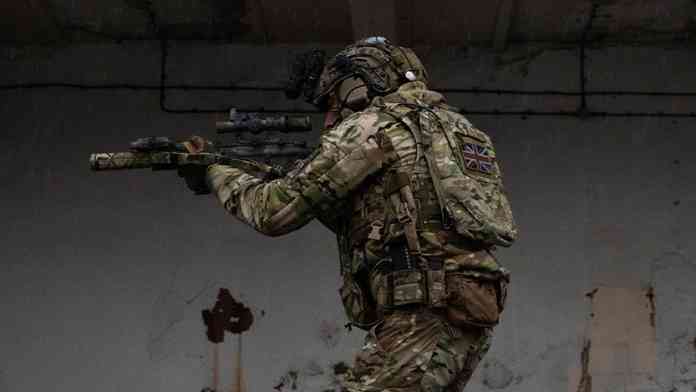Upcoming Events
Arktis Endurance Textiles Ltd

Arktis was created in 1985 by a former British Royal Marine, to improve upon British standard issue military gear. Something that would be far superior in form, function, and comfort. We continue that mission today, manufacturing high quality specialist clothing & equipment for military units, police forces, security personnel, and outdoor enthusiasts in the toughest environments around the world.
Bespoke Design Service
Specialist, bespoke equipment is at the heart of what we do. Our sales & design team are ready to help with any requirement or variation to the main product line that you may have.
Inherent FR
Inherent FR means that the fabrics used in our garments are created with their fire-retardant properties built-in or ‘inherent’ to the fabric itself. This differs from fabric treated with FR products because, unlike FR-treated fabrics, inherent FR never degrades.
IRR
Night vision uses the infrared spectral range of 700-1200 nm to identify subjects in low light conditions. Fabrics with IRR, or INFRARED REMISSION, work by masking the fabric’s reflective coefficient within the 10 -80% range to blend them in with terrain and foliage and break up the shape and contours of the wearer.
DWR
Durable water resistance, DWR treatments use hydrophobing agents to make water-resistant fabrics. Arktis uses the industry standard C6 Perfluorinated compounds in its DWR treatments.
Dropliner
Drop Lining is used to help ensure the operator remains dry even if the outer layer is compromised. Our latest generation of drop liners achieves a performance of 20,000 mm Hydrostatic Head & 20,000 g/m breathability.
Three-layer laminate
This consists of three separate layers working together to provide superior waterproofing, comfort, and durability. The outer layer is a hydrophobic fabric that provides waterproofing. The second layer is a breathable membrane that extracts the moisture generated by the wearer. The third polyurethane (PU) layer protects the inner layer from skin oils and dirt that can clog the breathable membrane, considerably increasing the effective life cycle of the product.
Recycled
As part of our environmental policies, Arktis is committed to using recycled Polyester. Also known as rPET, recycled Polyester is produced by melting down plastics and respinning them into Polyester fibre. Our D010 hoodie, for example, is made up of 15% rPET, equivalent to about five plastic bottles.
Research & Development
Our design teams regularly consult with frontline experts when designing equipment to ensure they meet and exceed the exacting standards of functionality, durability, and support required.
MOCAP (Motion Capture)
Undertaking a collaboration with the MoCap hub has allowed us to bring together expert scientific knowledge, experienced product users and our own expertise in design and manufacture to truly understand the performance of our products. As a result of working with the MoCap hub, we are bringing new and innovative products to the market, safe in the knowledge that their performance is backed up by rigorous scientific study.
Exercise Science & Biology
A subfield of kinesiology, our research specifically focuses on the areas of exercise physiology, biomechanics, and anatomy. Our research and KTP projects are focused on the physical toll frontline professionals experience in the course of their duties.
V02 Max V02 max or maximal oxygen consumption measures the amount of oxygen an individual can process during high-intensity training or activity periods. We’re researching the impact load bearing products have on a person’s V02 max and what can be done to reduce its impact.
Gait Analysis We’ve assessed the impact load bearing products have on the gait or walking pattern. This is done by comparing parameters, for example step length, cadence and speed, of a burdened and unburdened individual.
Testing & Certification
Satra, BTTG, HSTTS and other independent labs test Arktis products with certification by CE and UKCA.
Hydrostatic head testing – To establish how waterproof the fabrics of our garments are, a fabric sample is subjected to an incrementally increased water pressure until droplets begin to pass through. Arktis’ standard for waterproofing is rated at 20k mm.
EN342 – Thermal testing – This standard meets the requirements for garments designed to protect the user from cold weather environments of –5C.
EN343 – Waterproof and breathability testing – Garments must be resistant to wet weather and humidity, while also breathable enough to let moisture and sweat escape. Both aspects of this are graded 1-4, with 4 being the highest. Arktis can produce products to the highest 4:4 standard.
EN ISO 20471 – High-Visibility Clothing – Class 3 is the highest standard of high-visibility, determined by fluorescent materials, the size of reflective materials, and the contrast materials.
We always strive for excellence, because with lives on the line, you want nothing less. We are incredibly grateful and thank our customers for sticking with us. It has allowed us to further develop our products and work on some really amazing projects. We look forward to the future, after all, it’s only been thirty years.
Upcoming Events
digital issue












